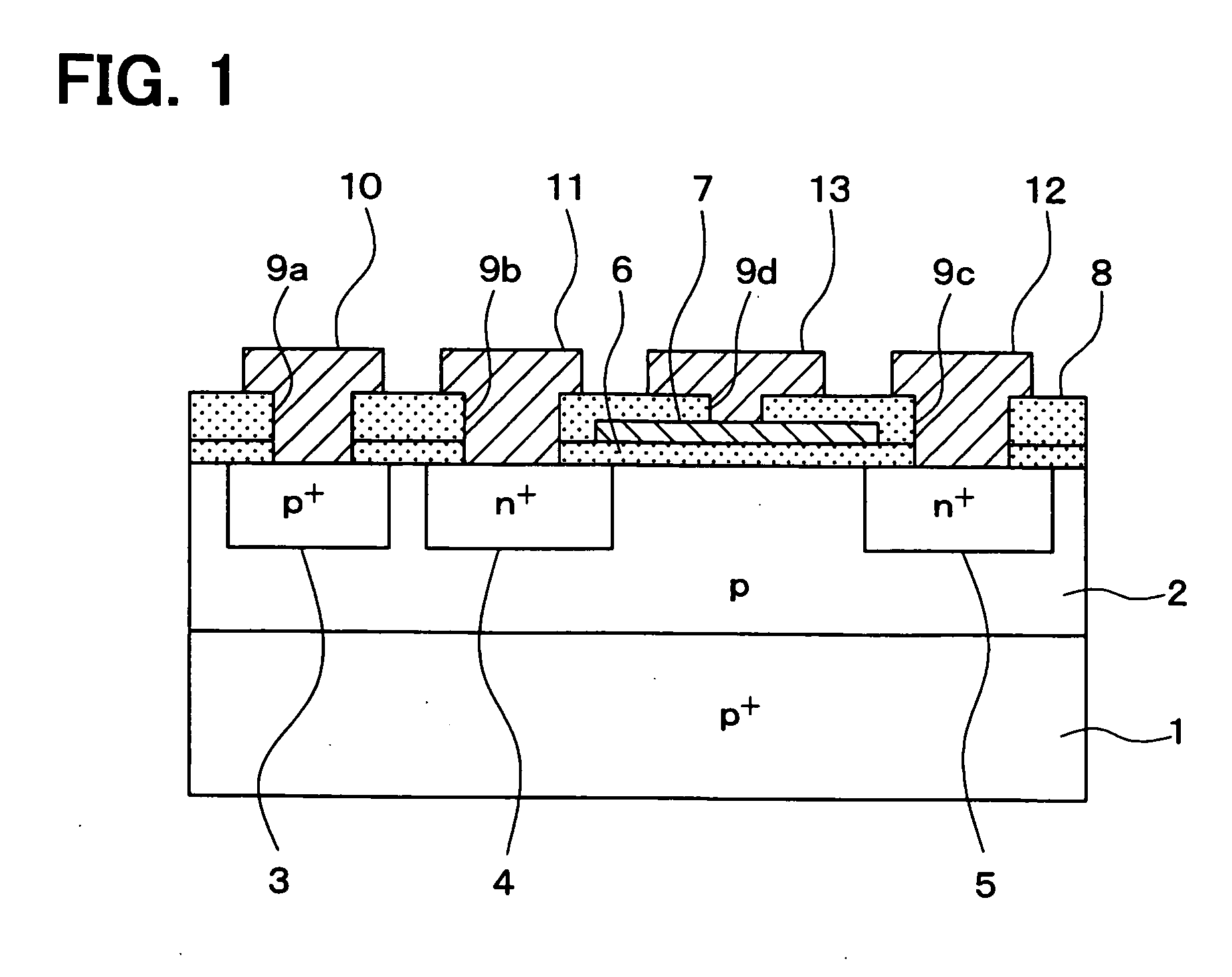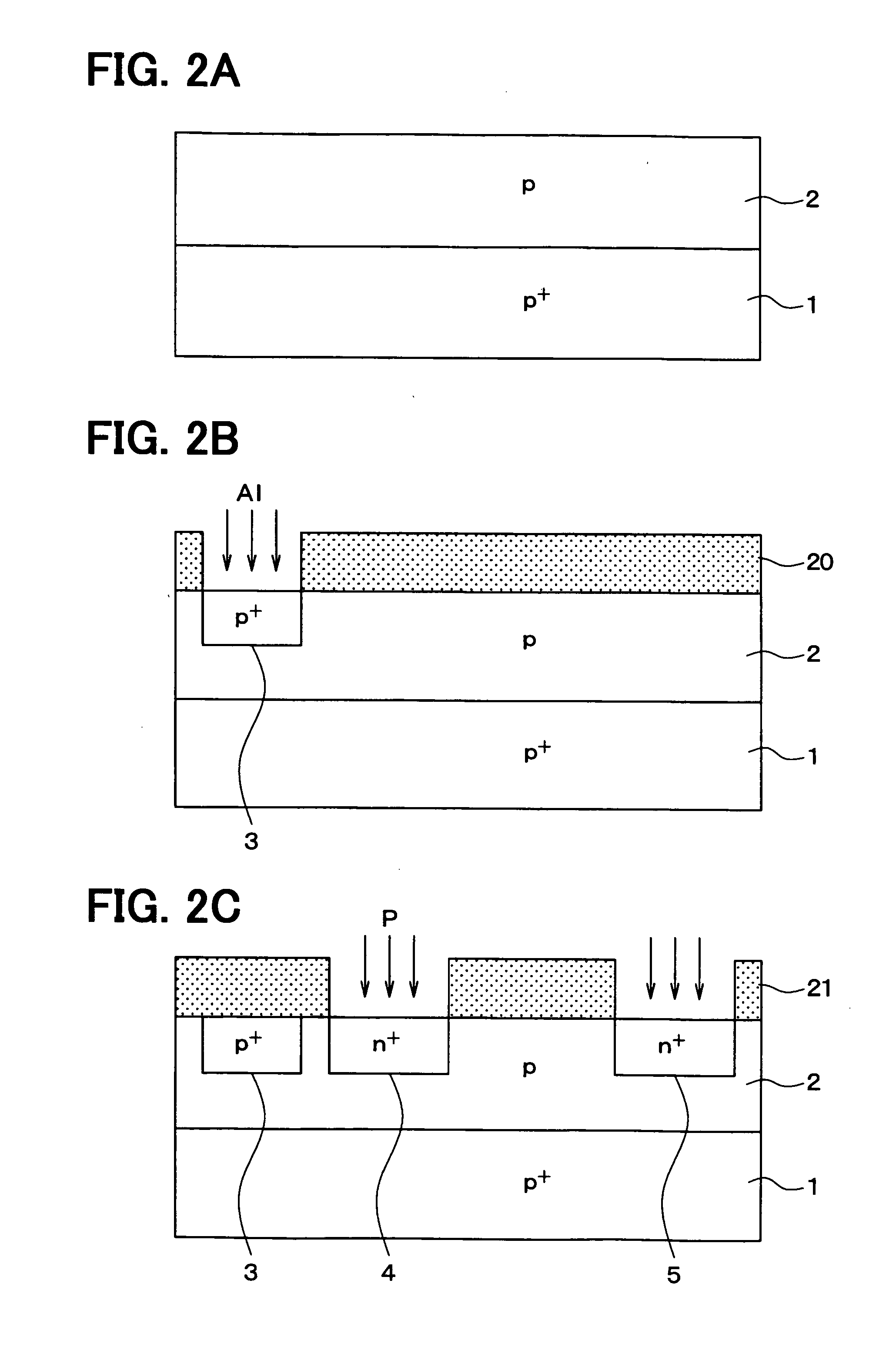SiC semiconductor device and method for manufacturing the same
a semiconductor device and semiconductor technology, applied in the direction of semiconductor devices, basic electric elements, electrical appliances, etc., can solve the problem of insufficient channel mobility obtained in the method disclosed in patent document 4 and achieve the effect of increasing channel mobility
- Summary
- Abstract
- Description
- Claims
- Application Information
AI Technical Summary
Benefits of technology
Problems solved by technology
Method used
Image
Examples
first embodiment
[0117]In view of the above examinations, a SiC semiconductor device is presented.
[0118]First embodiment of the present disclosure will be described. In this embodiment, one example is applied to an inversion mode lateral MOSFET. FIG. 1 illustrates a cross-sectional structure of the inversion mode lateral MOSFET, while FIGS. 2A to 3C illustrate manufacturing steps of the inversion mode lateral MOSFET of FIG. 1. With referent to these drawings, the structure and manufacturing method of the inversion mode lateral MOSFET according to this embodiment will be described.
[0119]As illustrated in FIG. 1, a p / p+ substrate obtained by forming, with one surface side of a p+ type substrate 1 made of SiC as a main surface, a p type base layer 2 made of epitaxially grown SiC on the main surface is used as a semiconductor substrate. The p+ type substrate 1 is, for example, a substrate which is made of 4H—SiC, has, as a main surface thereof, a (11-20) plane or a (1-100) plane, that is, a plane a vert...
second embodiment
[0140]Also in this embodiment, one example is applied to an inversion mode lateral MOSFET. The inversion mode lateral MOSFET according to the second embodiment has a similar structure to that according to the first embodiment but they differ partially in the manufacturing method. The inversion mode lateral MOSFET of this embodiment will next be described.
[0141]The inversion mode lateral MOSFET of this embodiment is manufactured by adding a manufacturing step shown in FIG. 6 to the manufacturing method of the inversion mode lateral MOSFET shown in FIGS. 2A to 3C in the first embodiment.
[0142]Described specifically, after respective steps shown in FIGS. 2A to 2C and FIGS. 3A and 3B, process shown in FIG. 6 is performed, followed by process shown in FIG. 3C and the like, whereby the inversion mode lateral MOSFET having a structure similar to that of the first embodiment is manufactured.
[0143]Described specifically, round-off oxidation of the surface of the gate 7 formed in the step sho...
third embodiment
[0149]In this embodiment, one example is also applied to an inversion mode lateral MOSFET. The inversion mode lateral MOSFET according to this embodiment has a similar structure to that of Embodiment 1 or 2, but they are partially different from each other in the manufacturing method. The inversion mode lateral MOSFET of this embodiment will next be described.
[0150]The inversion mode lateral MOSFET according to this embodiment is manufactured in a similar manner to that employed for the inversion mode lateral MOSFET shown in FIGS. 2A to 3C (and FIG. 6) except that the step of forming the interlayer insulating film 8 shown in FIG. 3C is changed to steps shown in FIGS. 8A and 8B.
[0151]Described specifically, after the respective steps shown in FIG. 2A to FIG. 2C and FIGS. 3A and 3B (or after the process shown in FIG. 6), processes shown in FIGS. 8A and 8B are performed instead of the process shown in FIG. 3C, whereby an inversion mode lateral MOSFET having a similar structure to that ...
PUM
 Login to View More
Login to View More Abstract
Description
Claims
Application Information
 Login to View More
Login to View More - R&D
- Intellectual Property
- Life Sciences
- Materials
- Tech Scout
- Unparalleled Data Quality
- Higher Quality Content
- 60% Fewer Hallucinations
Browse by: Latest US Patents, China's latest patents, Technical Efficacy Thesaurus, Application Domain, Technology Topic, Popular Technical Reports.
© 2025 PatSnap. All rights reserved.Legal|Privacy policy|Modern Slavery Act Transparency Statement|Sitemap|About US| Contact US: help@patsnap.com



